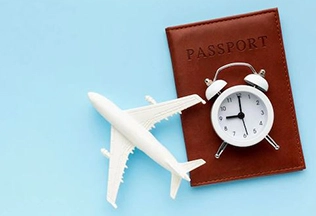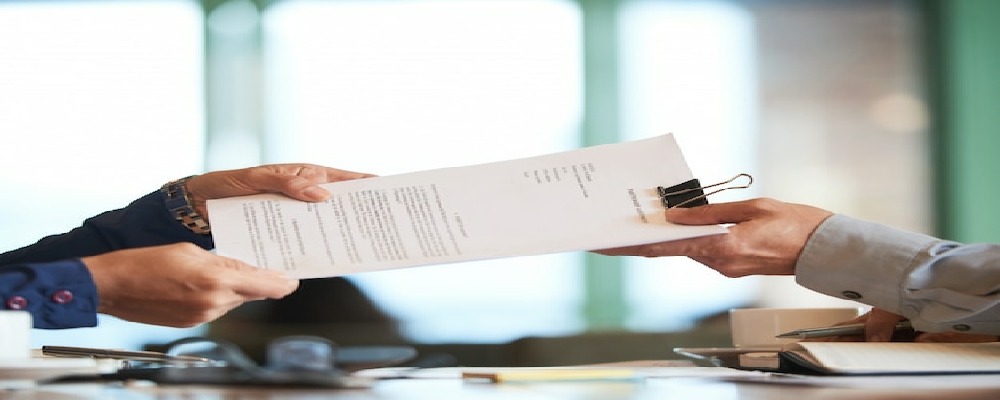
Visitor Visa
Our team of experienced professionals is here to assist you in obtaining the necessary travel documents for your next adventure. Here's what you can expect from our services:
Documents Required
- Passport Size photo
- Passport front and back
- Visiting card
- Pan card copy
- Confirmed Ticket Copy
Timeline and Cost
After the details you will provide, we will tell you the actual cost of the Service Well NRIWAY Team to ensure you that we will give you the most desirable Charges.
Google Rating
4.9
Happy Customers
10,000+
Pan India Coverage
750+
Choose Your City
Overview
Visitor Visa
In general, a foreign citizen wishing to enter the United States must first get a visa, either a nonimmigrant visa for a brief stay or an immigrant visa for permanent residency. Visitor visas are nonimmigrant visas that allow people to enter the United States briefly for business (visa category B-1), tourism (visa category B-2), or both (B-1/B-2).
What is the meaning of a visitor visa?
Visitor visas are nonimmigrant visas for those who desire to enter the United States briefly for business (visa category B-1), tourism (visa category B-2), or both (B-1/B-2).
Visitor permits would also not be provided for birth tourism (travel for the primary purpose of giving birth in the United States to obtain U.S. citizenship for their child).
How to Apply
There are various processes to applying for a visa. The order of these processes and how you complete them may differ depending on the US Embassy or Consulate. Please refer to the guidelines on the website of the US Embassy or Consulate.
Complete the Online Visa Application
-
Nonimmigrant Visa Application Online, Form DS-160 – Find out more about finishing the DS-160. You must: 1) finish the online visa application; and 2) print the application form confirmation page to bring to your interview.
-
Photo — You will submit your photo when filling out the online Form DS-160. Your photo must be in the format specified in the Photograph Requirements.
You should make an appointment for your visa interview at the US Embassy or Consulate in your home country. You may arrange your interview at another U.S. Embassy or Consulate, but be advised that obtaining a visa outside of your home country may be more challenging.
Wait times for interview appointments vary by location, season, and visa type, so you should apply for your visa as soon as possible.
Gather Required Documentation
Before your visa interview, gather and prepare the following documents:
-
Valid passport for travel to the United States – Your passport must be valid for at least six months beyond your stay in the United States (unless exempt by country-specific agreements). Each person requiring a visa, including any family members indicated in your passport, must complete a separate application.
-
Confirmation page for Nonimmigrant Visa Application Form DS-160.
-
If you are asked to pay an application fee before your interview, you will receive a receipt for your payment.
-
Photo — You will submit your photo when filling out Form DS-160 online. If the picture upload fails, bring one printed photo in the format described in the Photograph Requirements.
Additional Documentation May Be Required
Examine the directions for applying for a visa on the website of the US Embassy or Consulate where you want to apply. Additional documentation may be required to determine your eligibility. Additional papers may contain, for example, documentation of:
-
The purpose of your trip,
-
Your intent to depart the United States after your trip, and/or
-
Your ability to pay all costs of the trip.
-
Examine the directions for applying for a visa on the website of the US Embassy or Consulate where you want to apply. Additional documentation may be required to determine your eligibility.
Note: Rather than guarantees from U.S. relatives and friends, visa applicants must qualify based on their residence and links overseas. To apply for a guest visa, you do not need a letter of invitation or an affidavit of support. If you choose to bring a letter of invitation or an Affidavit of Support to your interview, please keep in mind that it is not one of the reasons considered in deciding whether to issue or refuse the visa.
Attend Your Visa Interview
A consular official will interview you to evaluate your eligibility for a guest visa. To get a visa, you must demonstrate that you satisfy the conditions set forth by US law. As part of the application procedure, ink-free digital fingerprint scans are taken. They are normally taken at your interview, however this varies depending on where you are. Following your visa interview, the consular official may conclude that your application requires additional administrative processing. If this is necessary, the consular official will notify you. After the visa is issued, you may be required to pay a visa issuance fee (if applicable to your nationality) and make arrangements for the return of the passport and visa to you. To find out more, look at the visa processing timelines.
Document Checklist
- Passport Size photo
- Passport front and back
- Visiting card
- Pan card copy
- Confirmed Ticket Copy
Why Nriway?

Secure Payment Gateway
Assured payment gateway and user information security

Document Confidentiality
Get end-to-end security through encryption for all your documents with PII (Personally Identifiable Information)

Vetted Service Providers
Verified providers delivering service of highest quality

Round the clock Client Support
24/7 email, chat, and phone support available, with a presence in the USA and India.

Dedicated Account Manager
End to End order management

Competitive Pricing
Price match guarantee & market driven pricing

Easy Refunds
Enjoy hassle-free refunds for any unused services

Order Tracking
Constant flow of communication throughout the process with systematic order tracking

Customer Friendly Interface
Intiative User Interface with On-page communication, order tracking, payment gateway, and secure document upload features.
Why Nriway?

Secure Payment Gateway
Assured payment gateway and user information security

Document Confidentiality
Get end-to-end security through encryption for all your documents with PII (Personally Identifiable Information)

Vetted Service Providers
Verified providers delivering service of highest quality

Round the clock Client Support
24/7 email, chat, and phone support available, with a presence in the USA and India.

Dedicated Account Manager
End to End order management

Competitive Pricing
Price match guarantee & market driven pricing

Easy Refunds
Enjoy hassle-free refunds for any unused services

Order Tracking
Constant flow of communication throughout the process with systematic order tracking

Customer Friendly Interface
Intiative User Interface with On-page communication, order tracking, payment gateway, and secure document upload features.
How it Works?

Search for Services
Search smart from hundreds of services in different categories from across the platform

Book Your Service
Choose your services and buy with confidence accompanied with easy buy with hassle-free cancellation support

Upload Document
Upload the required documents with end-to-end encryption and complete online security for your data

Verification, Costing & Feasibility
Your documents will be verified and you will receive your costing. After getting your costing make an interim payment for your booking

Make Payment & Track Progress
Get your costing followed by event-based tracking, alerts, and notifications at your fingerprints

Service Delivered
We will mail your document to your desired address. You can track the status of your order anytime during the entire process.
Testimonials

Ritika Sharma
Tourist Visa Assistance

Amit Mehra
Business Visa Processing

Priya Nair
Student Visa Support

Rahul Verma
Work Visa Application

Ananya Gupta
Visa Requirements Guidance

Vikram Malhotra
Full Visa Assistance & Updates
Testimonial
I wanted to visit my family in the UK, but the visa process felt overwhelming. The team guided me through every form, reviewed my documents, and even reminded me about small details I would have missed. My tourist visa was approved in just 8 days!
Testimonial
I had an urgent business trip to Germany, and time was running out. The staff handled my entire application quickly, made sure all documents were correct, and got my business visa approved right on schedule. Truly a lifesaver!
Testimonial
Applying for my student visa to study in Canada was stressful, but this team made it so easy. They explained each requirement, helped me prepare my financial documents, and kept me updated at every step. I couldn’t have done it without them.
Testimonial
When I got a job offer in Australia, I had no idea where to start with the visa. The consultants handled everything — from filling out the forms to explaining the medical test requirements. My work visa came through without a single issue.
Testimonial
I was confused about what documents I needed for my Japan visa. They gave me a clear checklist, helped me arrange everything, and double-checked my application. Their attention to detail was impressive.
Testimonial
From start to finish, the process was stress-free. They answered all my questions, followed up with the embassy, and even called me personally when my visa was approved. This is what professional service looks like.
FAQs

Awards We Have Received
NRIWAY is honored to be part of the Start-Up India Program. As a part of Orange Leaf Services Pvt. Ltd., NRIWAY was founded in 2018 to serve the Indian diaspora across the globe for their documentation, financial, and property management needs. NRIWAY identifies niche services for NRIs and aims to standardize the process from start to finish. Setting itself apart, NRIWAY prioritizes exemplary customer service and offers transparent pricing.
Blog Posts


Transcripts
How a Mumbai-based documentation process helped deliver a Mumbai University transcript directly to WES in just 8 days
Read More

Property Management
Home Rent Rules 2025: Key Updates Every Tenant and Landlord Should Know
Read More

Non Availability of Birth Certificate
How I Got My NABC in Chennai: A Real Case Study for NRIs Navigating Indian Bureaucracy
Read More



Transcripts
How a Mumbai-based documentation process helped deliver a Mumbai University transcript directly to WES in just 8 days
Read More

Property Management
Home Rent Rules 2025: Key Updates Every Tenant and Landlord Should Know
Read More

Non Availability of Birth Certificate
How I Got My NABC in Chennai: A Real Case Study for NRIs Navigating Indian Bureaucracy
Read More

Our Partners






















Search By City
